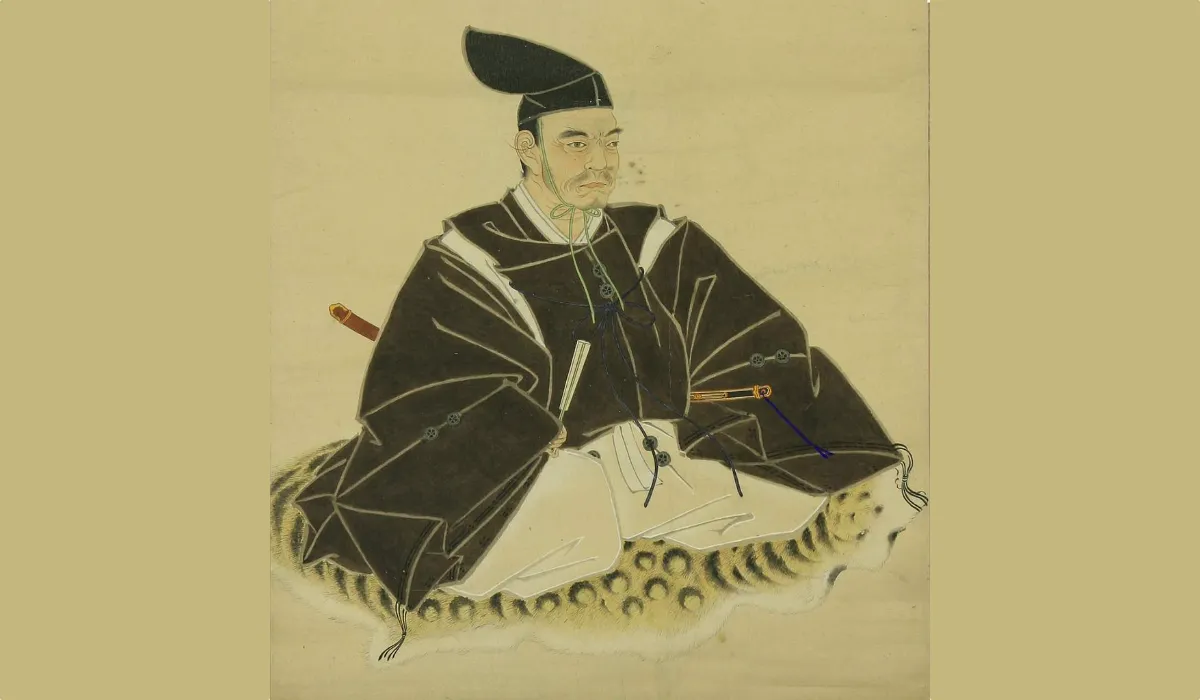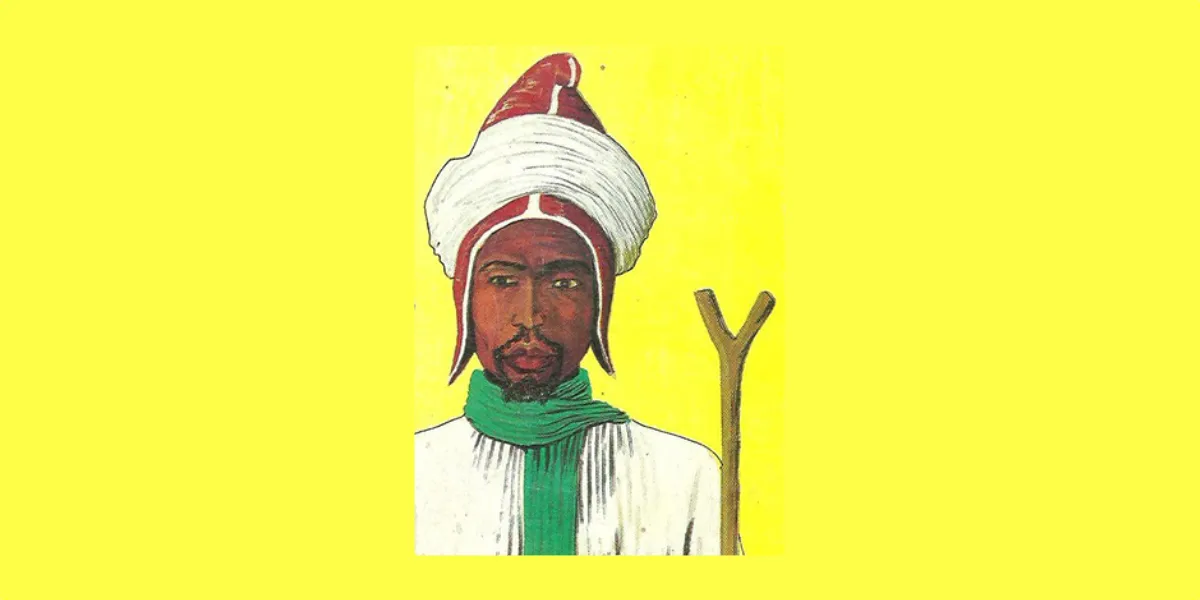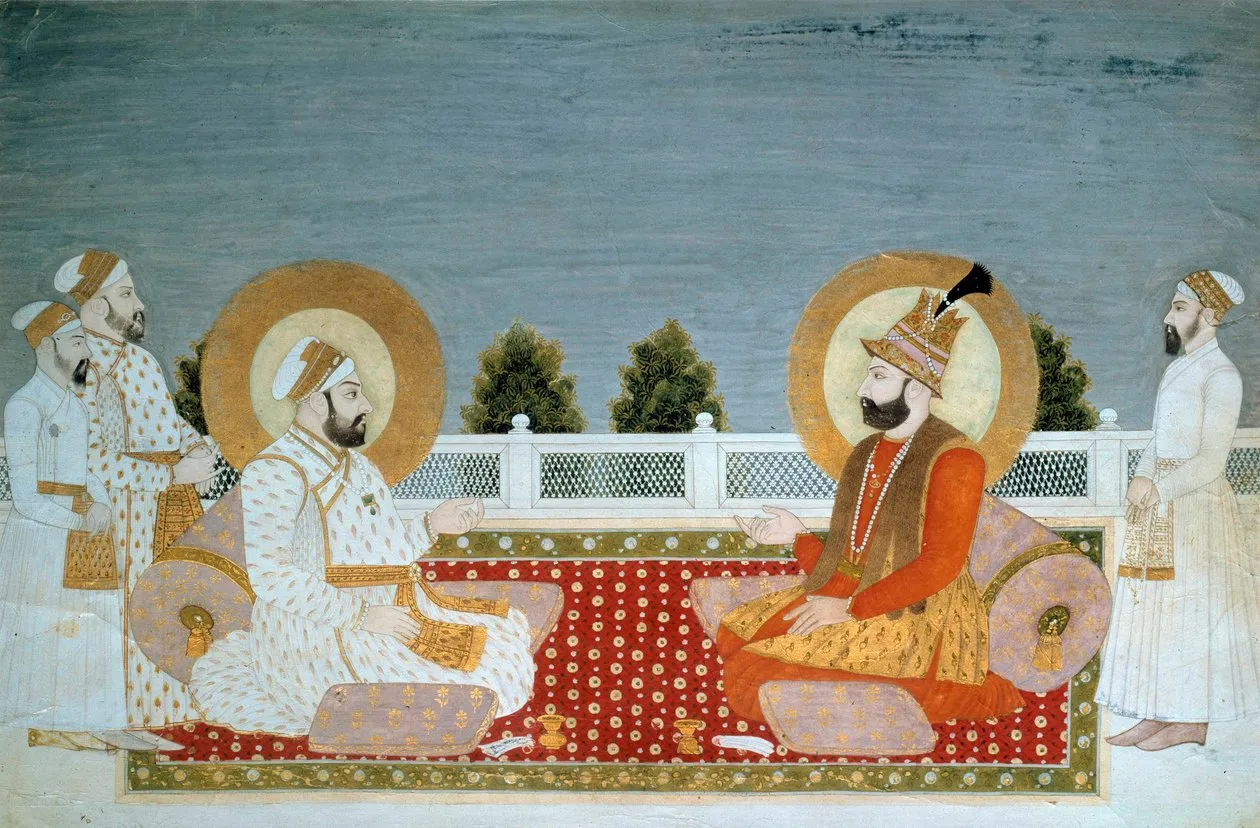When the End of Growth is not the Beginning of Decline
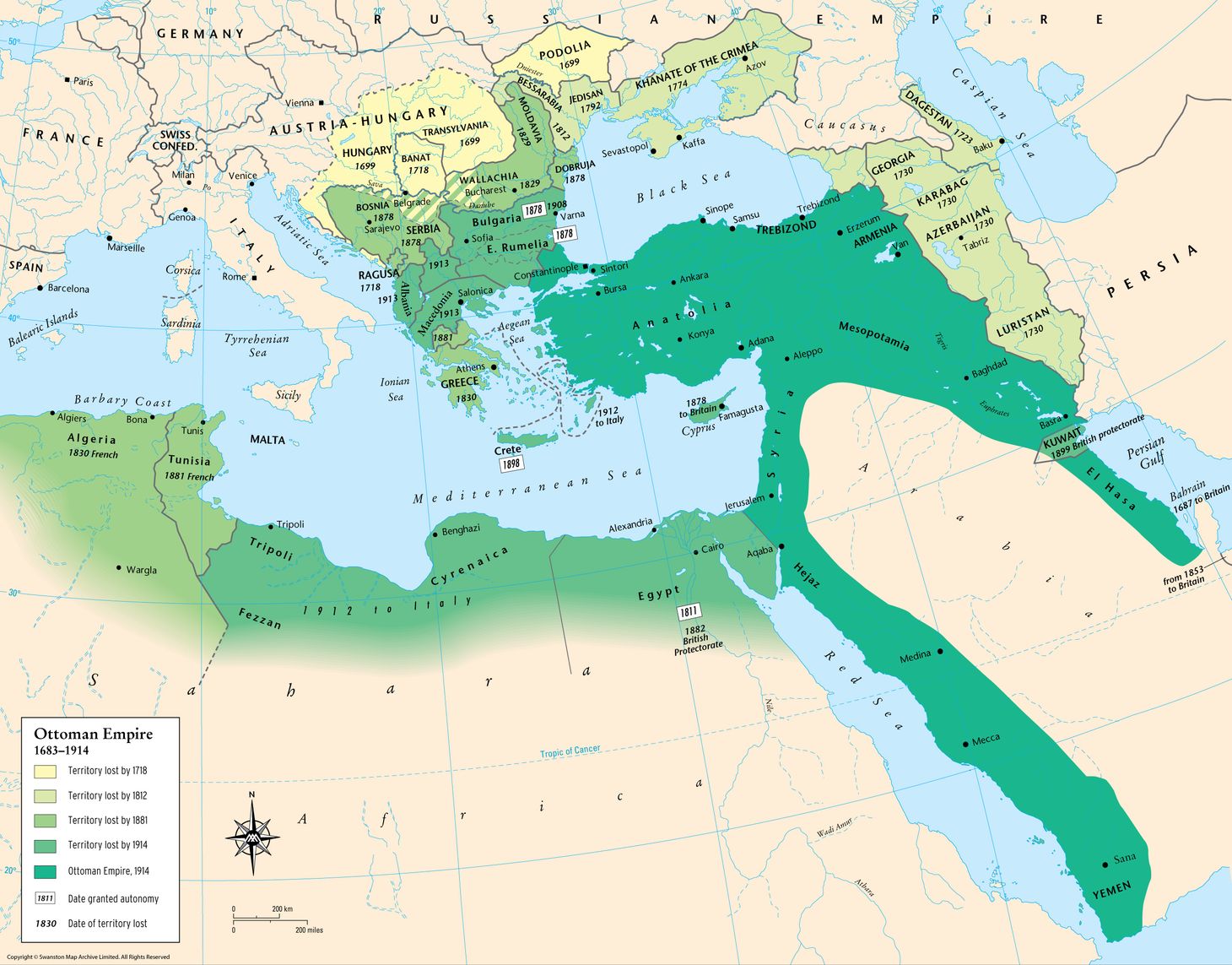
Table of Contents
If the myth of isolation is one of the main consequences of Eurocentrism for how we think about the history of East Asia, Eurocentric approaches to the history of the Ottoman Empire have encouraged us to begin to see its actual end in 1922 long before it occurred. A quick look at the Wikipedia page for the Ottoman Empire reveals:
The stagnation and decline, Stephen Lee argues, was relentless after 1566, interrupted by a few short revivals or reform and recovery.
At least Stephen Lee acknowledges there were a few bright spots over the last 450 years of the Ottoman Empire. Looking at maps of “Ottoman Decline” on Google Images reveals hundreds of visualizations of when the Ottomans lost different portions of their territory. My personal favorite is this map:
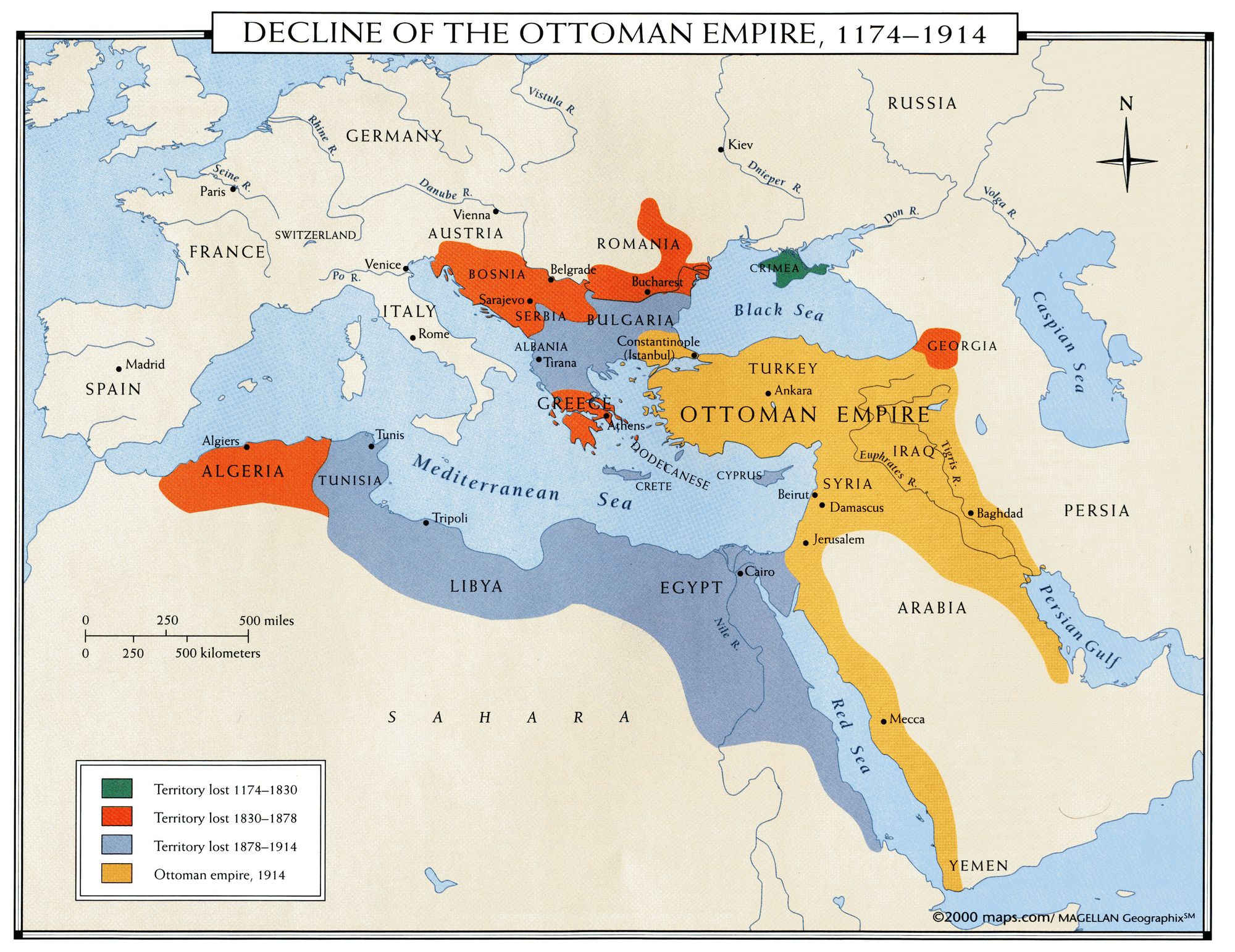
Somehow the Ottoman Empire, which began in 1299, was declining before it even existed! It’s also mildly amusing that in 650 years of history, the Ottomans only lost that small green-colored territory. The funny thing about this obsession with Ottoman decline is that we’re talking about a period of 450 years. I suspect that many states in the world (maybe the less than 250-year-old United States!) would be happy to be “declining” for over four centuries.
In many ways, the myth of Ottoman decline is as pervasive in world history as the myth of East Asian isolation also because of Eurocentrism. As discussed in my earlier post, Eurocentrism is a way of viewing the historical events in Europe as a norm for global developments. We then take that Eurocentric norm and use it to analyze events in another part of the world. Any divergence from the European trajectory becomes the reason why something is not correct or something went wrong in that other region. It should be said that Ottoman historians have been problematizing the idea of Ottoman decline, but this reinterpretation hasn’t seemed to influence world history. Instead of using Europe as our benchmark, I will look at Ottoman history in the sixteenth and seventeenth centuries from a global perspective.
The End of Expansion and the Obsession with Growth
During the sixteenth and seventeenth centuries, a number of European states were beginning to emerge as important powers in the world. Spain was establishing a global empire linking scattered territories in Europe under Habsburg rule to colonies in the Americas and the Philippines. Portugal established its extensive network of trading posts around the Indian Ocean and Brazil. In the seventeenth century, the Dutch, English, and French joined in this process of global maritime expansion. Robert Marks, in The Origins of the Modern World: A Global and Environmental Narrative from the Fifteenth to the Twenty-First Century, argues that England (later Britain) and France combined this territorial expansion with internal political changes to develop centralized nation-states that were effective at harnessing resources for economic and political growth. Based on this quick outline, the story of Europe in these centuries is one of growth, dynamism, centralization, and the origins of modern nation-states.
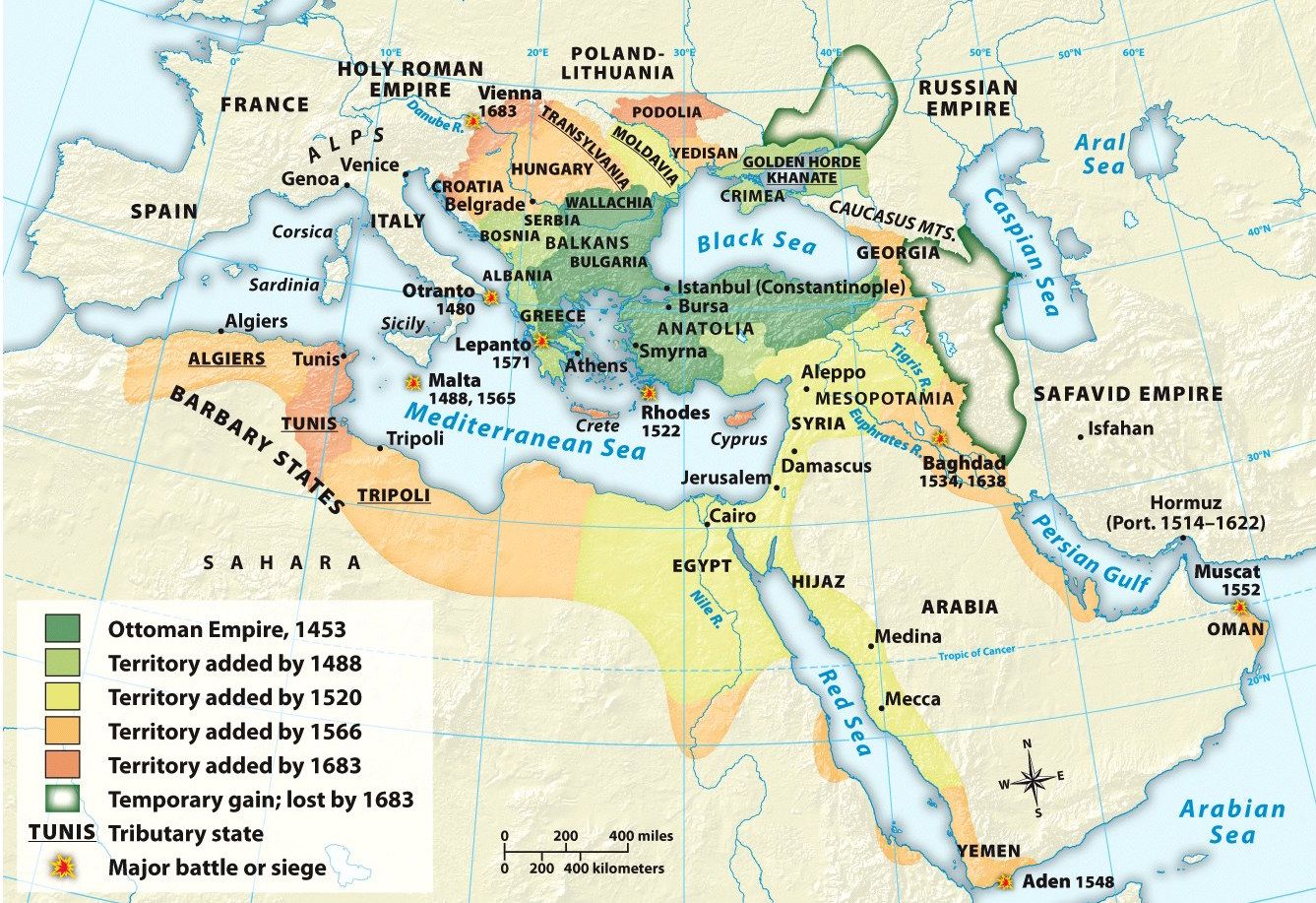
Meanwhile, the Ottoman Empire also went through a series of changes in the sixteenth and seventeenth centuries. Since its foundation in 1299, the Ottomans had been able to expand the Empire until the middle of the sixteenth century. After the death of Emperor Süleyman in 1566, expansion slowed down. Only a small amount of territory was added to the empire over the course of the next century. Historians, seemingly influenced by comparisons to Europe, have pointed to a number of moments during the sixteenth and seventeenth centuries as to when Ottoman decline began. The quotation at the beginning of this post suggests 1566, which was the death of Emperor Süleyman, as the first date. Some historians have pointed to the Battle of Lepanto in 1571. Roger Crowley, in a recent popular history, goes as far as to suggest the decisive nature of the European victory at Lepanto in tipping the balance of power between Europe and the Ottoman Empire. Other historians have pointed to the Ottoman failure to capture Vienna in 1683as the tipping point. Andrew Wheatcroft, in The Enemy at the Gate: Habsburgs, Ottomans, and the Battle for Europe views the failed siege not only as a turning point for the Ottomans but for Europe as a whole. In addition to these potential political tipping points, beginning in the late sixteenth century, Northern European merchants from Britain, France, and the Netherlands began to sign trade agreements with the Ottoman Empire that made it far easier for these European traders to operate within the Ottoman Empire than it had been two centuries earlier.
Given all these changes, it shouldn’t seem surprising that many historians have viewed these centuries as a period of decline. The Ottoman Empire had stopped expanding, it was no longer winning as many military encounters against Europeans as it had previously, and its economic relationship with Europe was changing. Instead of viewing these changes as the onset of decline, I encourage us to present them in our classes as more of a transformation of the Ottoman Empire.
The Ottoman Empire was always a far larger state than any of its European rivals. It was also more ethnically and religiously diverse. Given these realities, it was unlikely that the Ottomans could have adopted the same centralizing policies that were being implemented in Britain and France, even if they had wanted. In his The Ottoman Empire and early modern Europe, Daniel Goffman analyzes the first few centuries of the Ottoman Empire in relationship to Europe. He frequently mentions the Empire’s “flexibility” and “adaptability.” He argues that it was “Ottoman elasticity” that allowed the Ottomans to overcome their military setbacks and become an established part of “the European world of the sixteenth and seventeenth century” (231). He goes further to suggest that unlike the contemporary centralizing trend of Western Europe, “in the late sixteenth century, the Ottoman state simultaneously became more bureaucratized and less centralized.”
If we consider this Ottoman tendency to decentralization in light of European states’ tendency to centralization, it would be easy to see why this period looks to be one of Ottoman decline. The seventeenth century in Europe is marked by rulers such as France’s Louis XIV and his policies of centralization. But if we consider the changes in Ottoman governance from the perspective of the Ottomans themselves, a different image emerges. In his article, “Decline of A ‘Myth’: Perspectives on the Ottoman ‘Decline,’” M. Faith Çalişir examines the idea of decline in Ottoman historiography. He interprets this decision not to centralize as an active choice designed to maintain a degree of Ottoman rule over a large territory and reflecting previously established Ottoman traditions. He argues:
the Ottoman rulers did not impose ideological pressure or implement a strict rule in these particular territories [the Ottoman frontiers]. To maintain the sultan’s rule, the Ottoman capital used whatever means available including a wide use of of the local elites, maintaining the pre-Ottoman local customs and regulations. According to this practice, which is known as istimalet (lit. “to lean” or “incline in the direction of”) a classical Ottoman policy that aimed to gain the support of people through reconciliation and protection, the Ottomans paid significant attention to seek non-military and long-lasting solutions to disturbances in the newly conquered places. Thanks to this policy, the Ottomans, from the beginning of their empire, could establish centuries-long rule in non-Turkish and non-Muslim lands.
During the second half of the seventeenth century, the Köprülü family were the Grand Viziers of the Ottoman Empire. Following the established istimalet policy, they implemented a series of reforms (lowering tax rates and use of local languages) to the Ottoman bureaucracy and military that strengthened the Ottoman state. Çalişir argues:
the political, economic, and military achievements of the grand viziers from Köprülü family in the second half of the seventeenth century stand out as a significant gap in the unsatisfactory narrative of the “Ottomans’ inevitable decline.”
Despite no longer expanding territorially and even losing some battles, the Ottomans were not beginning to decline in the seventeenth century. Instead, the Ottomans were focused on transforming their government based on established traditions. They sought to maintain control over their extensive empire through a flexible system of governance that was nothing like what Louis XIV was doing in France. It would seem that historians looking at these centuries as the onset of Ottoman decline have not only been influenced by Eurocentrism, but also by present-day market analysts who see anything other than economic growth as a sign of decline. Our obsession with growth leads us to think that if a country’s GDP is not increasing or a company’s profits are not growing, there is something wrong. Analysts worry that because the United States’ GDP is not growing as fast as China’s, it must be starting to decline. The Ottoman Empire was one of the world’s largest empires in 1600. It was no longer growing, but it also wasn’t declining.
The Ottomans and Other Muslim Empires
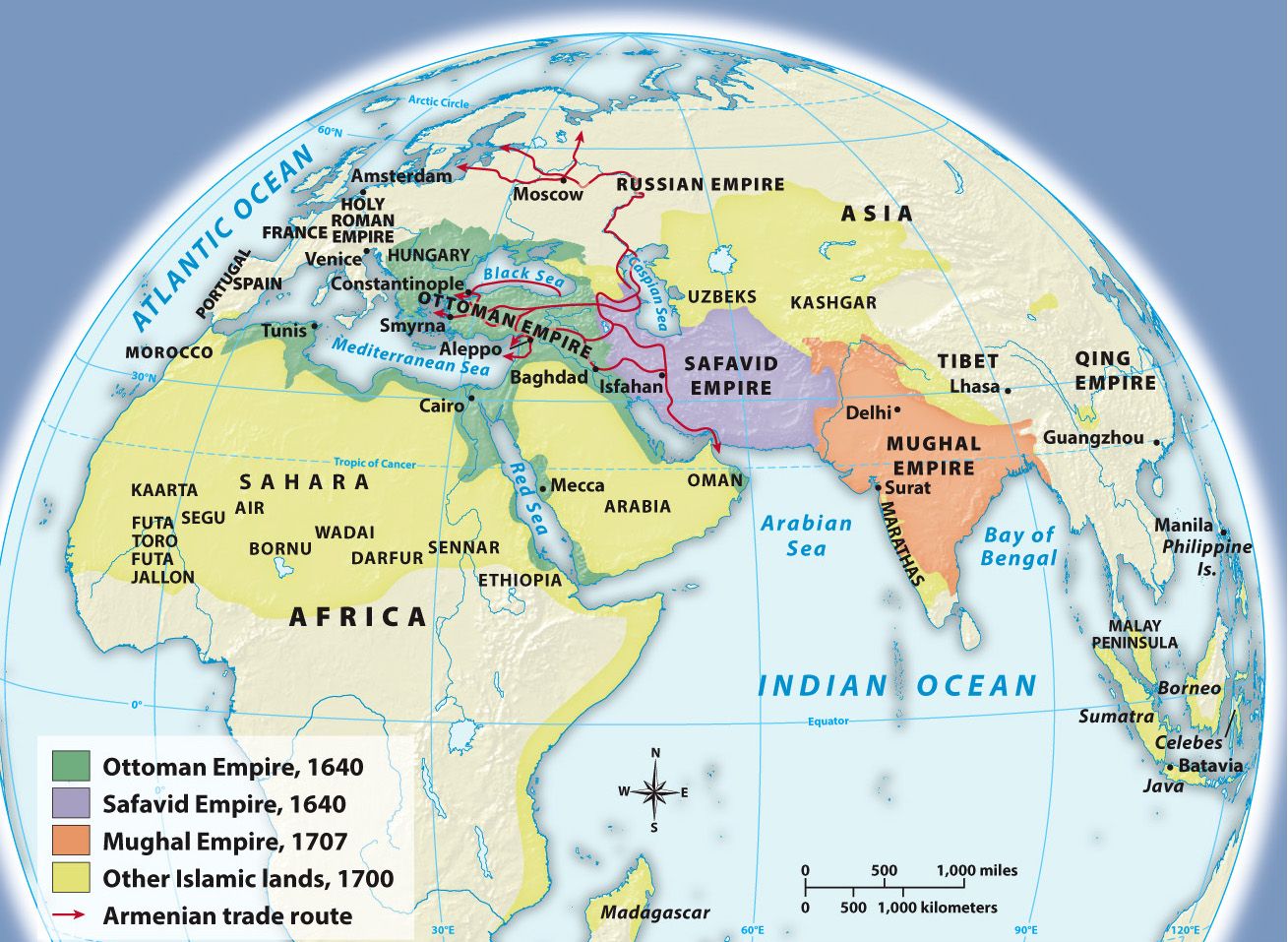
Another way to see the success of these more flexible and less centralized Ottoman policies is to compare the Ottomans to the two other Muslim empires that existed at the same time. By 1700, three large Muslim empires ruled most of the territory from the western end of North Africa to the east of India. The Safavids ruled over Persia, while the Mughals ruled over greater India. All three Muslim empires had gone through long periods of expansion, but only the Ottomans were able to survive and adapt after that expansion ended.
By 1800, the map of the Muslim world looked quite different. The Safavids no longer existed, and the Mughals existed in name only. The Safavid Empire had collapsed in 1722. For much of the eighteenth century, Persia was governed by competing warlords, until the Qajar Dynasty took over nominal control of Persia at the end of the century. In India, the Mughals were first challenged by a number of local dynasties, and then the British began establishing control over parts of India in the middle of the eighteenth century. Meanwhile, the Ottomans, despite being in “decline,” somehow managed to maintain control over most of their territory.
When Trade is not just about Economics
The Ottoman Empire’s changing economic relationship with Europe is another way in which the Empire is sometimes seen as being in decline. During the Ottoman Empire’s formative years, it used its powerful navy to confront the Venetians and establish the Ottoman state as the major power in the eastern Mediterranean. Despite going to war on a few occasions, the Ottomans also signed commercial agreements with the Venetians that gave them access to Ottoman ports and regulated tariffs.
In the second half of the sixteenth century, commercial arrangements between the Ottomans and Europeans began to change. The Ottomans signed new treaties with Northern European states, such as England, France, and the Netherlands. These new treaties are frequently referred to as capitulations. Northern European states had gained access to Ottoman markets and gained certain protections for their merchants in the Ottoman Empire. From a European perspective, these treaties seem to suggest a weakening Ottoman state that was ceding a share of international commerce to potential European rivals. The treaties are seen only from the economic perspective of how Europeans viewed trade. For them, trade was a sort of zero-sum game in which any expansion of European involvement in international commerce meant that some other region was losing out.
Instead of viewing these treaties from a Eurocentric perspective, Goffman suggests that the Ottomans signed these treaties for political reasons. They were less concerned with maintaining a certain share of global commerce and more concerned with gaining increased access to strategically important items that Europeans traded. In other words, the Ottomans wanted to regulate access to English silver and gunpowder and were willing to give the English greater trading rights in exchange. Given that the Ottoman Empire would continue to exist for another 300 years, this bargain seems like a good deal!
Conclusion
By looking at the Ottoman Empire in the sixteenth and seventeenth centuries from the perspective of its earlier history and in comparison to contemporary Muslim states, a surprisingly different image of the Ottoman Empire emerges. The Empire in the seventeenth century was no longer the powerful military machine that had conquered parts of the Middle East, North Africa, and Europe during the thirteenth through mid-sixteenth centuries. At the same time, it was not losing territory. It was transforming from a state based on conquest to one focused on maintaining power and control over a large region through a series of flexible policies. Maybe a closer examination of the Ottomans’ transformation and subsequent success at preserving the state will help some Americans to worry a little less about the United States losing out to China and encourage us to think more about how our economy is simply transforming.
Stay tuned for the second half of this post on the Ottomans, decline, and the nineteenth century: “Healing the Sick Man of Europe.”
Liberating Narratives Newsletter
Join the newsletter to receive the latest updates in your inbox.

